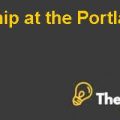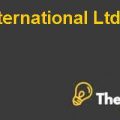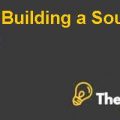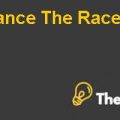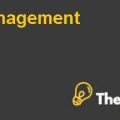
SANOFI AVENTIS TENDER OFFER FOR GENZYME Case Solution
Introduction
The orphan drug act was passed in 1983 to encourage pharmaceutical producers to produce orphan drugs in the U.S. Orphan Drugs are those drugs whose target market is at-most 200,000. Due to such low target market, this segment remained unattractive for pharma companies. In order to serve the patients of orphan drugs,foods and drugs authority gave incentives to pharmaceutical industry players.
Genzyme was the first company to capitalize this new opportunity offered by FDA. The company started producing medicines for rare diseases such aslyso some storage disease, in which patients lacked enzymes, causing dangerous deposits to attack the organs. This deficiency could lead to variety of disabilities such as liver enlargement, and bone deterioration. By 2009, the company became the third largest biotech company in the world with country base of more than 90 countries. The main products of the company were Cerezyme, Fabrazyme, Myozyme, and Renagel/Renvela. The highest revenue generating product of the company was Cerezyme, which would expire on 2019.
Moreover, this company was an acquisition target of Sanofi. Sanofi was facing the patent cliff, as its main medicines were reaching their patent’s expiry. As a result of this, it would give rights to other companies to produce medicine of same formula. Therefore, this would affect the bottom line of the company, as a result the market share of the company will reduce. In order to save itself from patent cliff, the CEO of Sanofi wrote a letter to Genzyme’s CEO for the acquisition of Genzyme. This acquisition would assist Sanofi to survive in the market for a longer period of time as the products of the targeted company were bio technical oriented as compared to Sanofi’s chemical oriented. Moreover, it would also diversify the revenue stream of Sanofi. In August 2009, Sanofi offered $69/share to the company for each common stock outstanding. However,this offer was rejected by the board of directors of the targeted company. Due to which,Sanofi was going to announce bid, in order to purchase the share directly from the shareholders.
Problem statement/ Issues
The main issue associated with this case is regarding the share price of Genzyme. Sanofi offered $69/share to the company however the CEO of Genzyme (Termeer) rejected this offer because as per his opinion the company’s share was worth more $69/share. In addition to this,through DCF model, we have calculated the price of share.
Case analysis
Industry analysis
The pharmaceutical industry in the United States was heavily regulated because of much consideration of safety and research. The whole industry was under control of FDA and all the drugs which were marketed by the companies were approved by FDA. More of its analysis is performed through Porter’s five forces model.
Porter’s five forces model
- The threat of new entrant: The threat of new entrant was very low in this industry because of heavy regulations and high capital requirement. Most of the funds were spent on research and development by the companies, which is why this segment has remained far from the new players. Moreover, the market share of the whole industry is fragmented as a result,snatching the market share from the already settled players is not a piece of cake.
- The threat of substitutes: The threat of substitutes is low in this industry due to increasing awareness among the people regarding scientific evidences. Nowadays,people believe in science which is why they prefer to take research qualified medicines for the betterment of their health. The substitute of this industry could be like fruits, and natural products. Even substitutes are present in abundant quantity, however their consumption as an alternative to medicines is very low......................
- This is just a sample partial case solution. Please place the order on the website to order your own originally done case solution.

